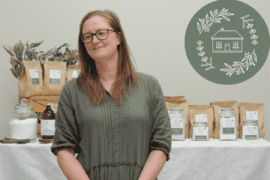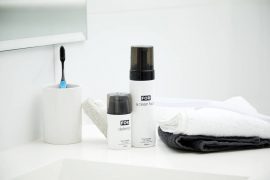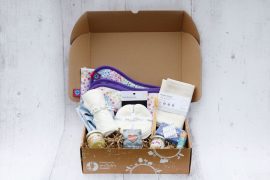“She fought valiantly, wielding the umbrella with expert precision, desperately trying to shield her children from the sun’s relentless assault. But the sun was strong, and the umbrella, though mighty, was but a mere mortal weapon in the face of its power…” Is this how you feel trying to keep your children safe in the sun without using the traditional chemical products?
A chemical-free life doesn’t need to feel like an epic, playing out in your backyard.
In this article, we’ll show you eight important things to look for, so you can choose a sunscreen that really is all natural, and keep your family safe in the sun without all the struggle.
1. Ingredients
Obviously, a chemical-free sunscreen is made up of chemical-free ingredients. Most people only really look at the active ingredients. That is the ingredients that protect you from the sun. However, to really know if a sunscreen is completely chemical free, you would need to look at all the ingredients. Unfortunately, there are a couple of problems here. Most sunscreens don’t list all their ingredients, and you would need to be able to recognise naturally derived and synthetically derived ingredients by their name.
We therefore have a simpler solution for you. Look for a sunscreen that advertises itself as chemical free. Sunscreens are regulated under governing authorities like the Therapeutic Goods Administration in Australia and can’t make direct claims like this unless they are true. Words like ‘natural’ may only refer to the active ingredients. So, look for a claim like ‘chemical free’ or ‘all natural’ to keep your family chemical free.
2. Broad Spectrum Protection
There’s not much point in buying sunscreen that doesn’t protect you properly. Broad spectrum sunscreen protects you from both Ultra Violet A radiation, which penetrates deeply into the skin even in the shade or under an umbrella, and Ultra Violet B radiation, which only shallowly penetrates in direct sunlight but burns the skin. Without being labelled broad spectrum, sunscreen only protects from the Ultra Violet B radiation. Even if it’s SPF 50 or 100. Choosing a sunscreen labeled broad spectrum is very important.
3. Hypoallergenic
Babies have very sensitive skin that is much thinner than adults. So it’s very important to choose a sunscreen that is hypoallergenic and suitable for even the most sensitive skin. Most sunscreens that are chemical free will be hypoallergenic, but not always. So it’s important to look for sunscreens that are listed as hypoallergenic or suitable for sensitive skin.
4. Nano / Non-Nano Ingredients
The research isn’t fully in on this one. However, there are some questions being raised about natural sunscreens that have the particle size of the active ingredients low enough to be considered nano particles. Nano particles are small enough to absorb through the layers of the skin and potentially into the bloodstream. While questions are still be raised about whether this happens or not, until the research is fully in, you may wish to consider going with a sunscreen that is considered non-nano or micronised instead. Or if you prefer, go for a sunscreen that uses zinc as an active ingredient, which is an essential mineral in the body anyway.











